Your living room is one of the most social and important areas of your house—whether you’re a frequent entertainer, a movie fanatic, or just a Sunday afternoon napper! Because you spend so much time in your living room, it’s important to boost your overall energy with the practice of Feng Shui. If you’re looking to thoughtfully design (or re-design!) your living room to incorporate the practice of Feng Shui, keep reading for our top 10 tips!
What is Feng Shui?
If you’re new to the world of Feng Shui, don’t worry! You’re not alone. Let’s break down the basic principles of Feng Shui before diving into our top tips for a feng shui living room.
- Feng Shui is an ancient Chinese practice and belief that the way your home is built, the way that you use your space, and the way that you arrange pieces in it (such as furniture, art, plants, etc.) creates a balance (or dis-balance) with the natural world.
- To make things simple, Feng Shui is all about the interaction of humans and the environment they surround themselves with. The goal of feng shui is to promote a positive flow of energy (or chi/qi) in our spaces in a way that promotes the same energy inside of us.
- The literal translation for feng shui is ‘wind-water’ in English. In Chinese culture, wind and water are associated with good health and fortune.
Feng Shui Tips for Your Living Room
If you’re ready to bring the Feng Shui to your living area, we have a few tips to get you started.
1. Put function first
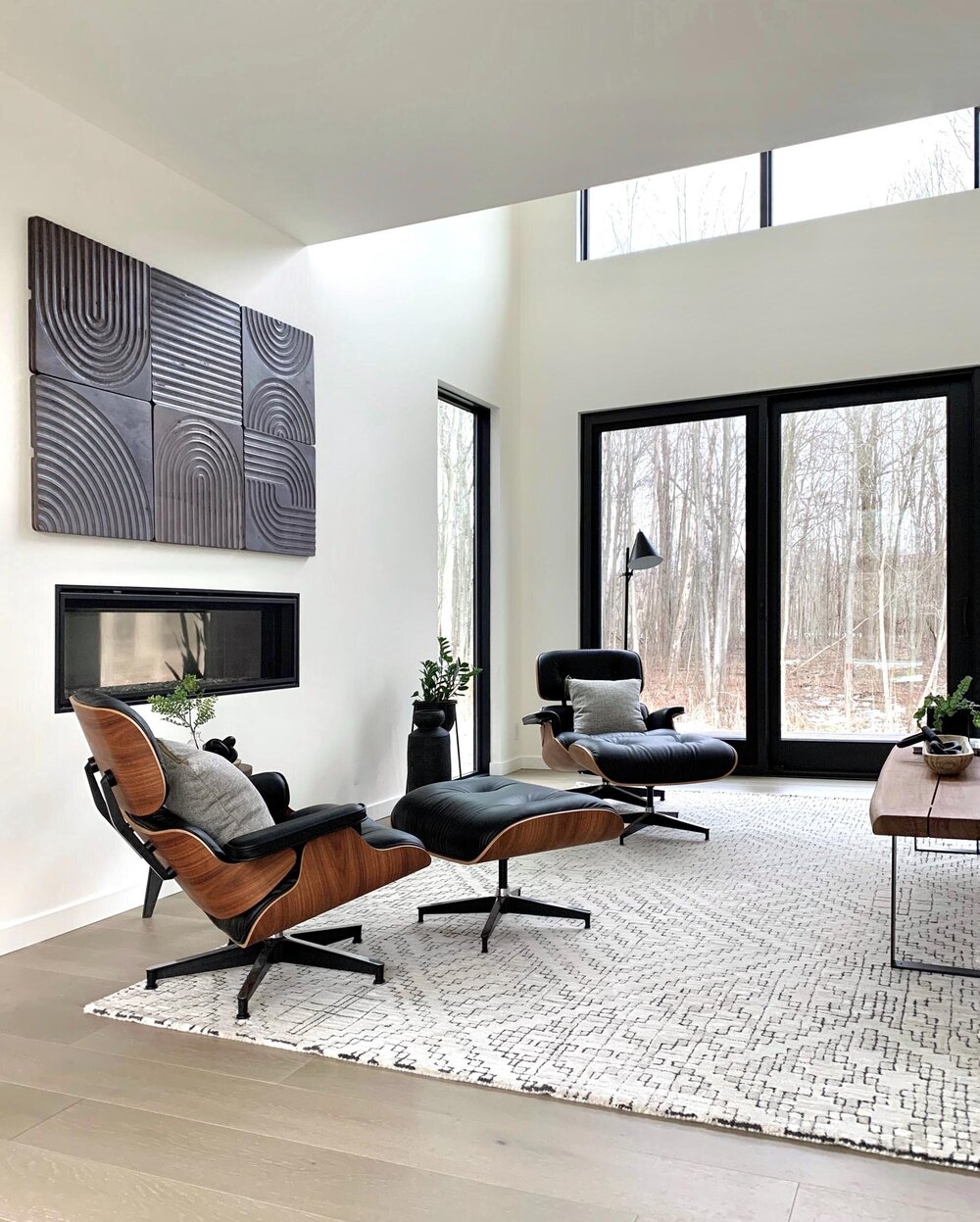
Before you jump into painting and accessorizing, it’s first important to consider your lifestyle and what you will be doing in your living room. Feng Shui is all about intention so always design your living room with purpose and function in mind. Ask yourself these questions: Do you have children that will be using this space? What will you be using your living room for? Do you frequently entertain guests? How often will you be using this space? All these questions and more will guide you on the right path to choosing your layout and furniture with purpose.
When picking out the right furniture for your living room, don’t forget to look for pieces that offer multiple functions (like a couch that converts to a bed for guests or a coffee table that offers storage inside.) Doing so will not only save you money, but it will also keep your space clutter-free which in turn, will promote a great balance of energy.
When creating a layout for your living room, you’ll also want to make sure that you’re leaving the pathways clear. This will allow energy to move throughout the room more easily.
2. Don’t be afraid to declutter
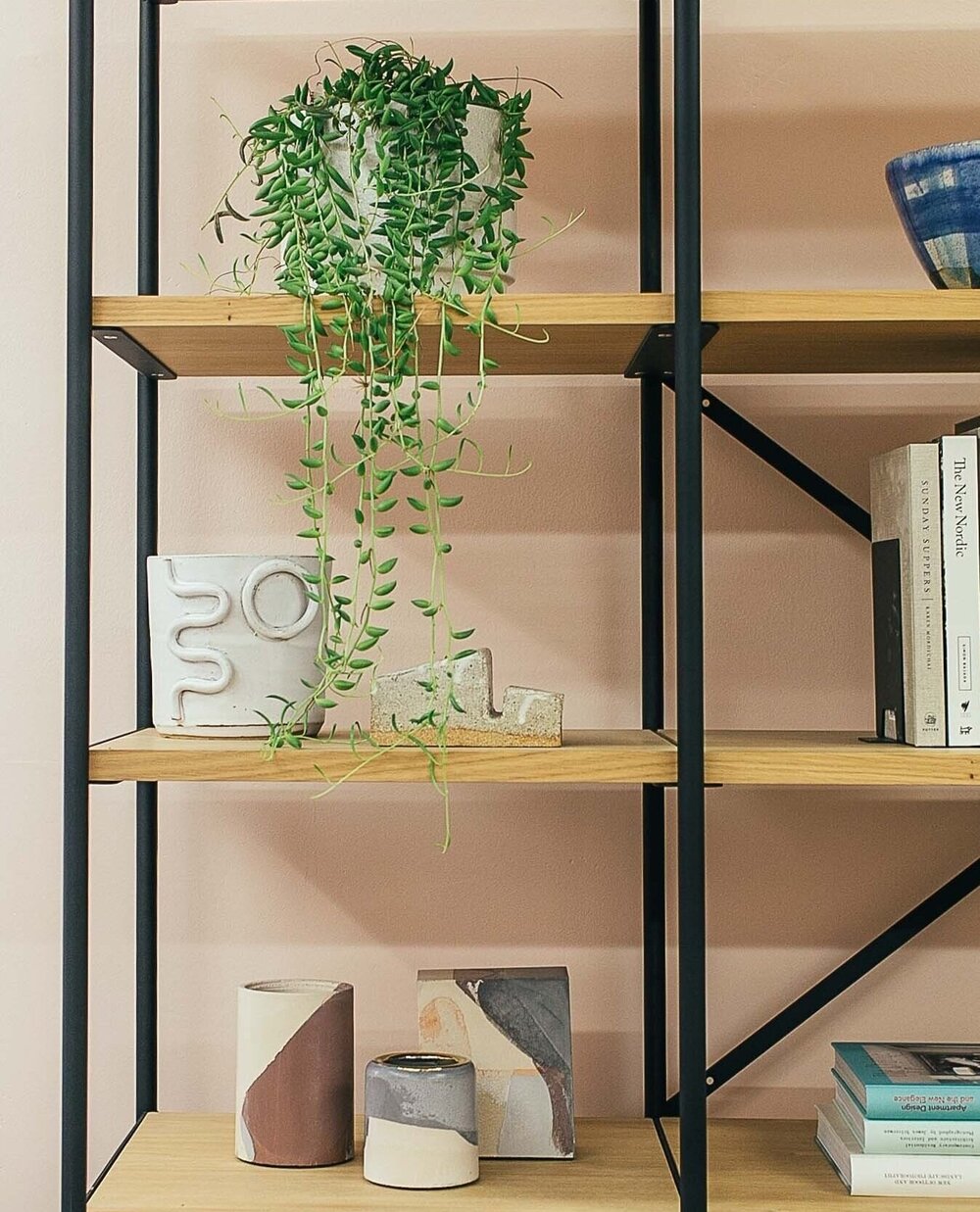
Speaking of keeping things clear, don’t forget to declutter your space before diving into the redesign.
When the spaces that we inhabit are messy or cluttered, it oftentimes creates a stressful mindset and exudes negative energy.
Decluttering your living room all goes back to the idea of being functional in design. If an item doesn’t serve a purpose (or if you don’t absolutely love it!), consider moving it to a space where it will be functional or donate it.
Feng Shui is all about spatial harmony and allowing energy to flow in and out of the areas we live in. If you’re constantly existing in a space that is cluttered, it can disrupt this flow.
3. Air it out!
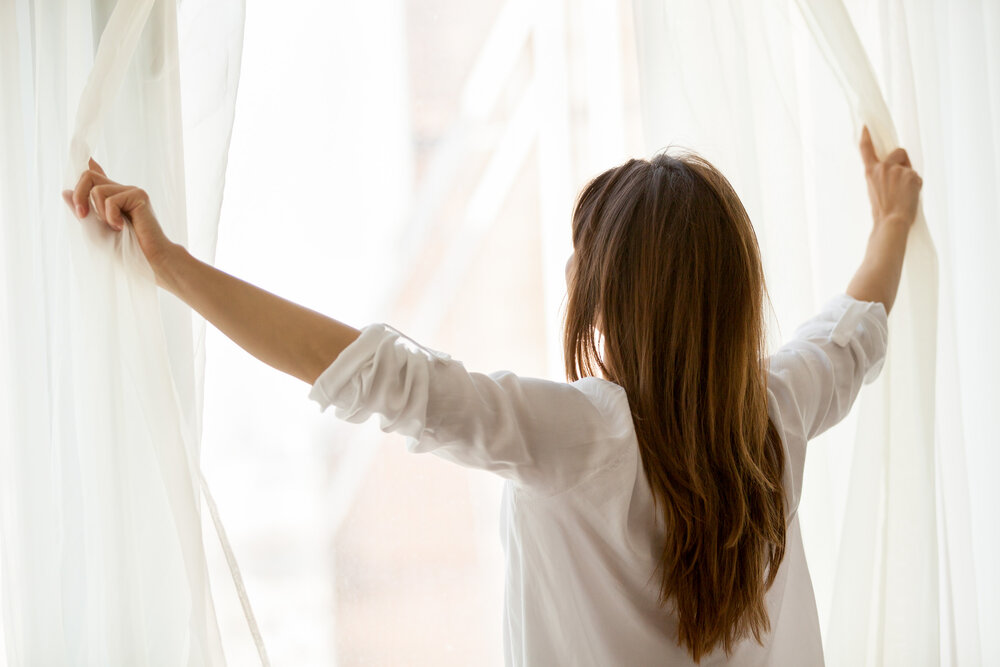
Now that you’ve cleaned out physical items from your living room, it’s time to clear the space on an energetic level. The purpose of clearing the space is to remove any built-up human emotions that may be lingering in your living room.
You can clear your space through several different methods such as diffusing essential oils, smudging, burning incense (especially sandalwood), or playing certain mantras in the space. You can even simply open up the windows for a super easy way to clear your space. All of these methods act as a way to remove any old, unwanted energy to make room for new, uplifting chi.
4. It’s all about balance
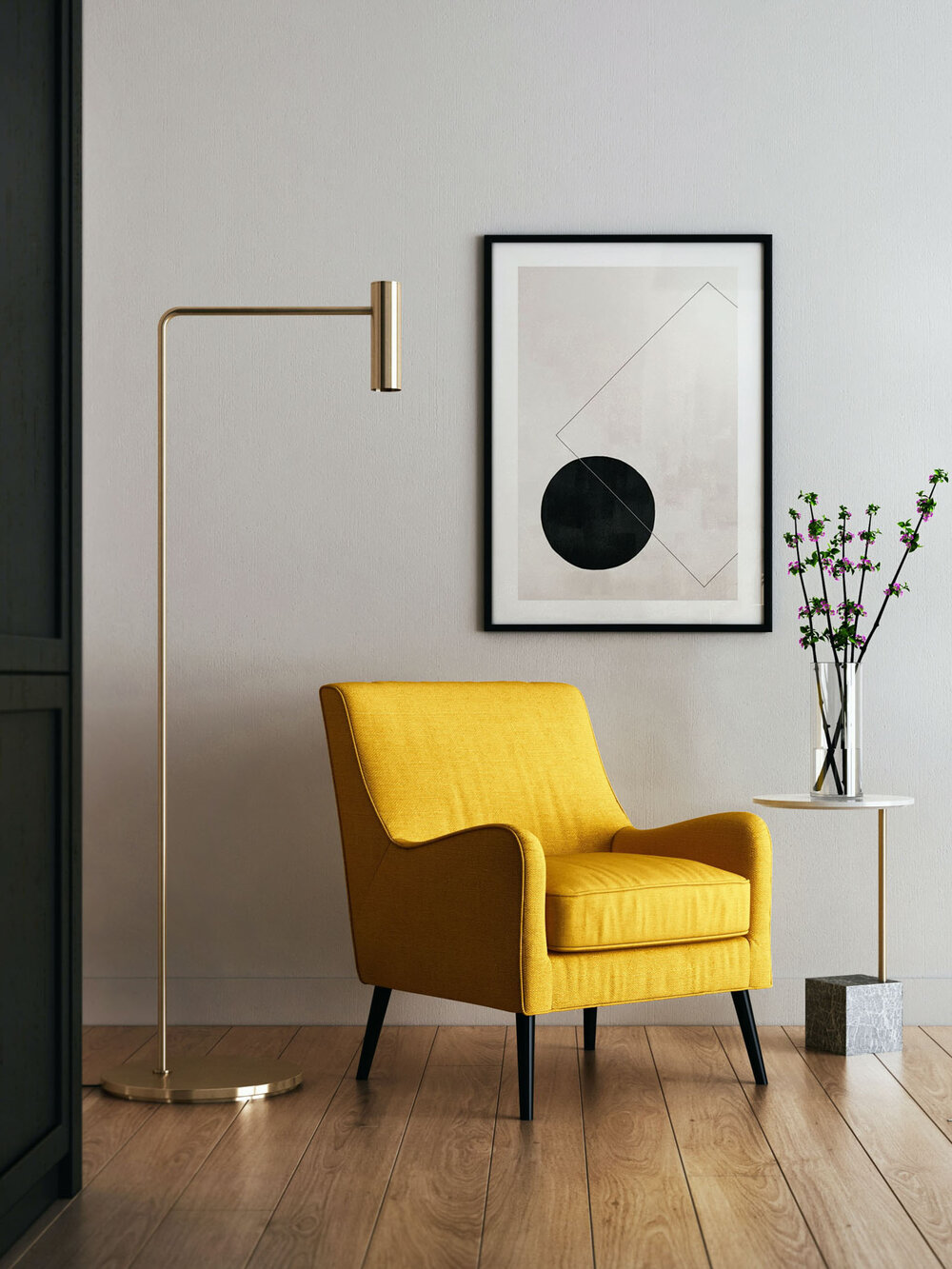
An important aspect of Feng Shui is the balance of the five vital and natural elements of earth, wood, fire, water, and metal in your space. When designing your living room with Feng Shui in mind, make sure that there is an equal balance of these five elements. If there is an imbalance of elements in the space you inhabit, it often leads to an imbalance in your emotions and personal life.
With that being said, you don’t always need to have these five items physically present in your space at all times. For example in the picture accompanying this section:
- Earth is represented by the stone cube on the bottom of the table and by the yellow color of the chair.
- Wood is represented by the wood flooring as well as by the flowering branches in the vase.
- Fire is represented by the lamp itself, as electricity and electronics are in the realm of the fire element.
- Water is represented by the water in the vase as well as the color black and the round shapes.
- Metal is represented by the brass lamp and table stand.
5. Choose meaningful color

Color is huge in Feng Shui to improve or uplift certain areas of your life. Color also goes back to the five elements and the important role they play in your own energy.
And while certain color palettes can promote feelings such as calm and serenity, it’s also important to go with your gut! If you are attracted to a certain color or color palette, go for those shades! You never want to choose colors that you aren’t attracted to just because someone tells you it’s what you should do.
Choose colors that promote positive energy within yourself because everyone is different and what works for some may not work for others!
6. Keep others in mind

Typically, a living room is a shared space with your family members or friends so it’s crucial that they feel comfortable and welcome.
To achieve this, make sure that each inhabitant of your home has a place to relax.
It’s also important to arrange the furniture in a way that allows for conversation and socialization. After all, the living room is one of the most social rooms in the house!
7. Incorporate rounded pieces
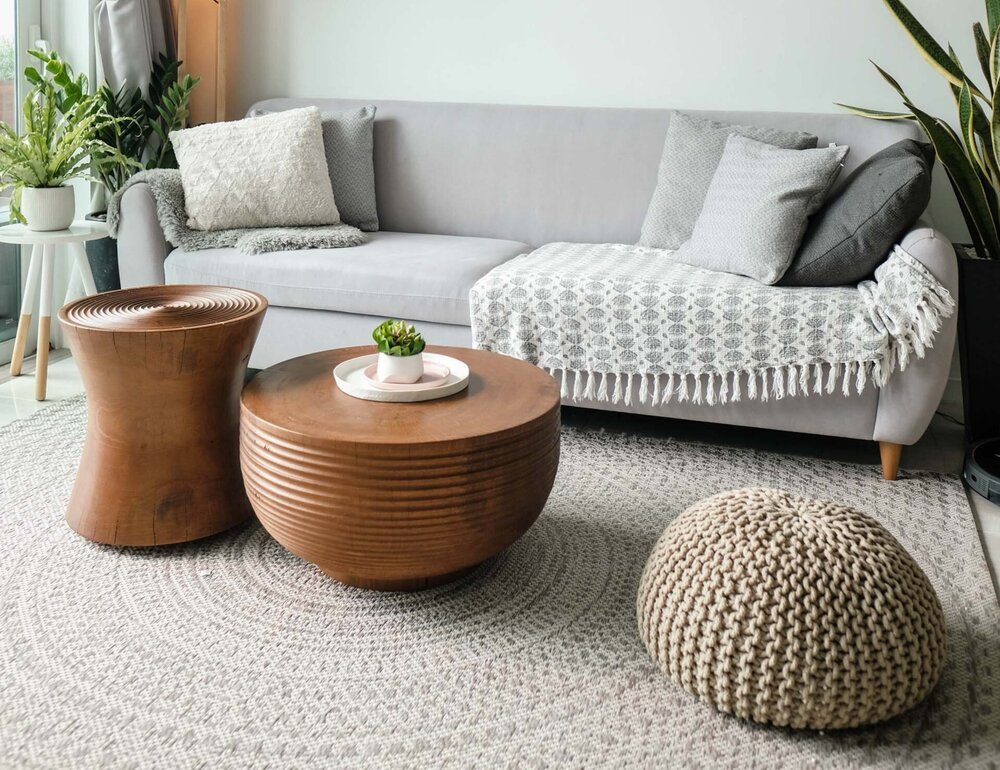
When designing a feng shui living room, you’ll want to try and avoid harsh angles and corners. These angles are called ‘poison arrows’ in the practice of feng shui which essentially direct negative energy at a certain point in the room.
Try opting for rounded pieces of furniture to avoid this!
8. Accessorize thoughtfully
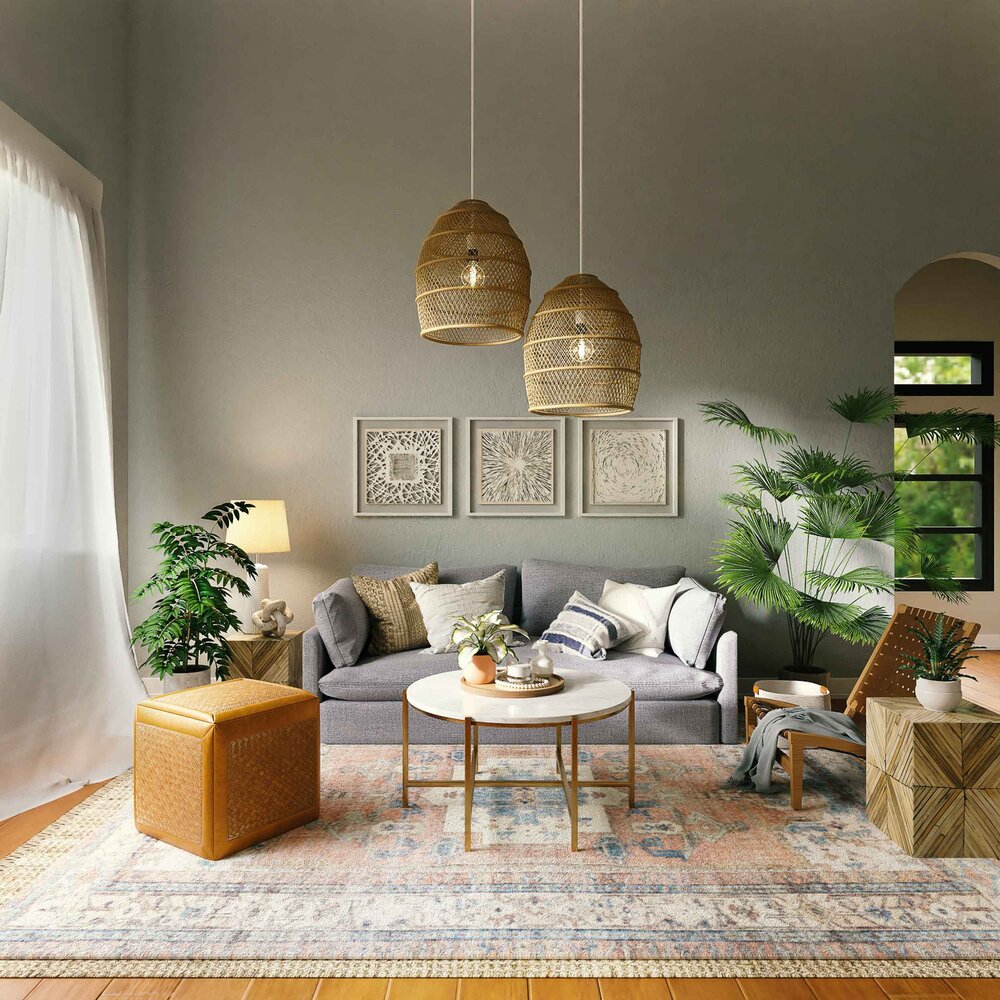
When choosing your living room accessories, try to create a style or look that brings you happiness. The environment we surround ourselves with always has an influence on our mental and physical well being so make sure to choose items that show up for you in a positive light. For example, you’re reminded of an ex-partner when you look at a vase, it’s time to get rid of it.
This also applies to art. While art is subjective to everyone’s personal opinions, there are certain things you should think of before hanging a new piece in your living room.
1. Do you have history with this piece of art? If you look at the art and don’t receive positive energy from it, it doesn’t need to be in your space.
2. Use your art to help with the balance of the five elements. This could be done with the actual image or just the colors that are used.
3. Make sure to not hang your art too low. Low hanging artwork leads to low energy and we don’t need any of that!
9. Bring in the greenery
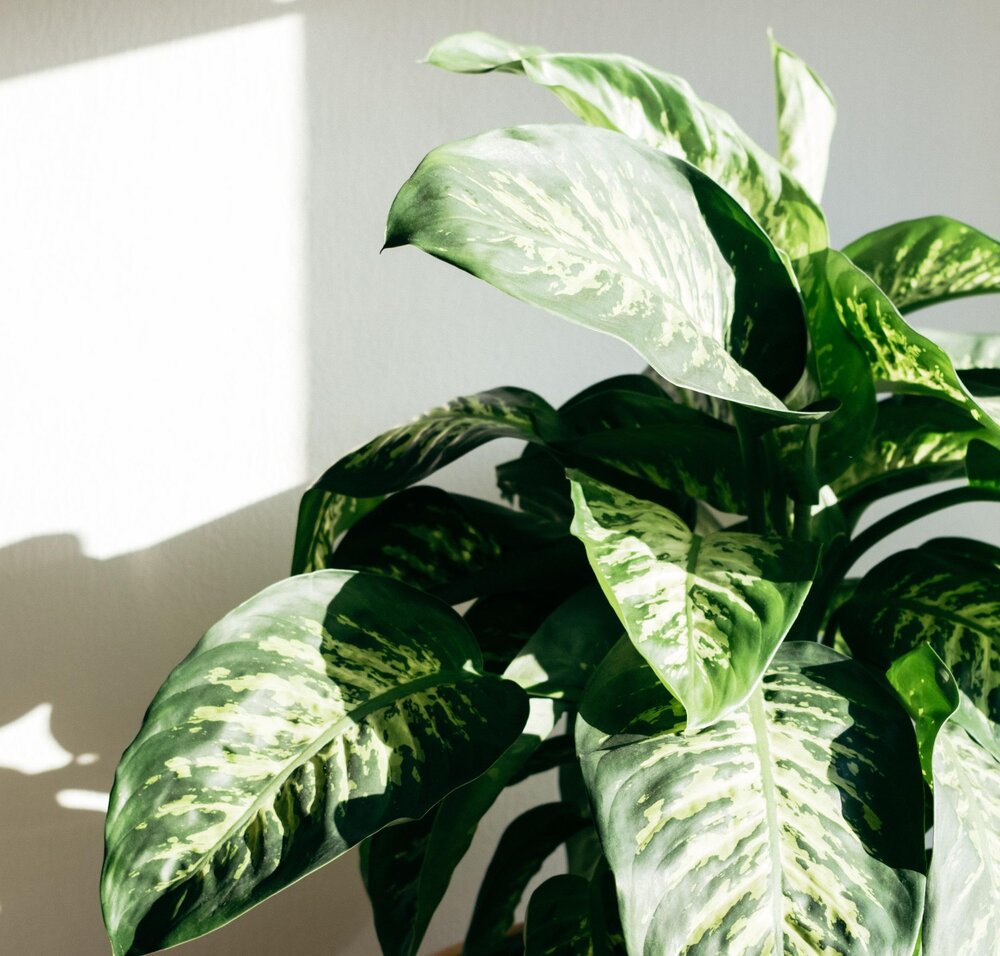
Plants and greenery are not only a great way to incorporate the element of wood into your living room, but they also promote major life energy!
Plants are also a great way to purify the air and space leaving a bright, clear room.
10. Make sure to keep it personal!
With all of this being said, the most important aspect of a feng shui living room is that it reflects you and your personal tastes. The true purpose of feng shui is to promote good energy and leave you feeling ready to take on the world. Don’t forget to reflect your personal style when designing.
Full article originally published as “10 Ways to Improve Your Living Room with Feng Shui“.


